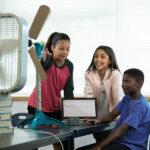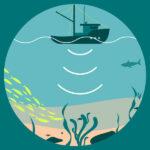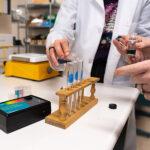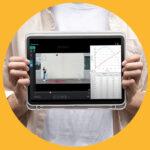
Sharing ideas and inspiration for engagement, inclusion, and excellence in STEM
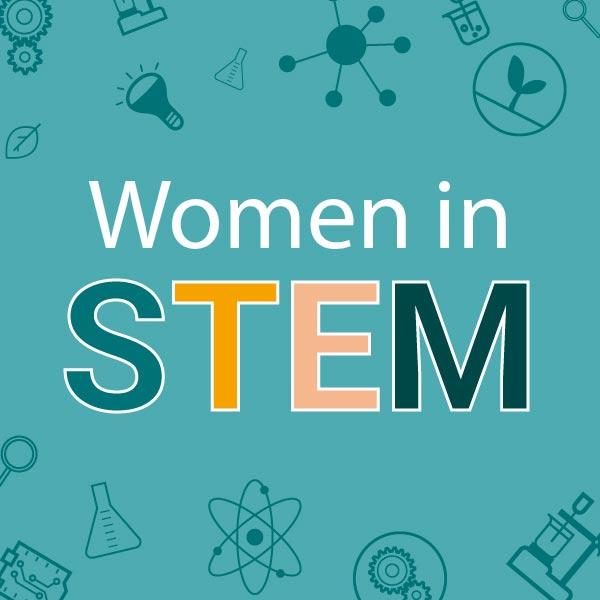
In honor of Women in STEM Month, we spoke with three professionals who use data collection, research, and hands-on science to make an impact in their fields. From food science to environmental compliance, their work showcases the many ways STEM shapes our world and the unique career opportunities your students might not know about. We’ve included engaging classroom experiments that connect to each professional’s field, helping you inspire students by bridging classroom learning with real-world STEM careers.

Kristen Jensen
Sensory Scientist
Topeka, Kansas
Kristen is a sensory scientist at Hill’s Pet Nutrition in Topeka, Kansas, where she analyzes data on pet food taste, aroma, and appearance to develop products that are both nutritious and appealing to pets and pet owner preferences.
What’s something students today might not think about as part of a STEM job?
Food science is a great example of the wide range of STEM careers that exist. Many people don’t realize that sensory scientists like me work behind the scenes to develop the food products we see in stores. The same goes for things we take for granted, like running water and electricity—there are scientists and engineers making it all happen. STEM isn’t just biology or chemistry; it can lead to all kinds of unique and unexpected careers!
What do you love about working in STEM?
The thing I like most about working in STEM is the experimentation and discovery. I design experiments, set them up for statistical significance, collect data, and analyze results. The most fun part is running the statistics and seeing the conclusions—whether one product scores better than another or if there’s a tie. From there, it’s about digging deeper into why we got that result, which leads to even more questions.
What was a memorable hands-on experience you had in a science classroom?
My high school science classes got me excited about STEM, especially food science experiments, which were the most fun. It’s what led me to pursuing a degree in food science. One experiment in chemistry involved measuring the sugar content in bubble gum by weighing it before and after chewing—it was a fun way to learn about solubility and polarity. Another experiment in my animal science class had us taste-testing different milk samples to detect defects, including one contaminated with sanitizer! Those hands-on experiences stuck with me and showed me how science applies to everyday life.
Bringing Food Science to Your Classroom
Engage students with the Quantifying Iron in Cereal experiment from Food Chemistry Experiments, an investigation that mirrors the work of food scientists like Kristen. In this experiment, students extract and measure iron content in fortified cereals using colorimetric analysis—applying the same analytical skills used in food science for nutrient analysis, quality control, and product development. This hands-on activity demonstrates how chemistry connects to both human and pet nutrition, inspiring students to explore careers in food science.

Ester Rogel
Environmental Compliance Specialist
Portland, Oregon
Ester Rogel is an environmental compliance specialist in Portland, Oregon, helping commercial and industrial entities reduce pollution through regulatory expertise and environmental science.
How is data collection important in your work?
I assist clients in managing water quality permits and making sure they meet regulatory standards—so data collection and analysis are crucial. This involves collecting and analyzing wastewater and stormwater samples to identify pollutants. If contaminants like high acidity or metals are found, we use the data to adjust pre-treatment methods, such as modifying pH levels or exploring alternative solvents.
Regulatory agencies require documented evidence of pollution reductions before wastewater or stormwater can be safely discharged, so knowing how to collect, analyze, and interpret data, as well as how to clearly communicate your findings, is essential.
What’s something that might surprise students about opportunities in STEM?
STEM careers can take unexpected turns, and you don’t have to follow a single path. I started in wildlife science as a field researcher, working with species like bull trout and sage grouse. Over time, I realized many environmental issues were tied to water quality, so I went back to school to study natural resource management. That led me to regulatory work in wastewater management, and eventually, to my current role in the private sector, helping industries meet environmental compliance. I’ve seen firsthand how many doors STEM can open—many of my colleagues also started in one field and ended up in another. No matter where you begin, there are endless opportunities to learn, grow, and pivot into new areas.
What was a memorable hands-on experience you had in a science classroom?
When I think back on what got me excited about STEM, I always remember my biology professor, Professor Feibert. She was incredibly passionate—so much so that she would get sidetracked during lectures, sharing stories from her research days and completely losing track of time. Her enthusiasm was contagious, and it made me realize that STEM should be exciting. That mindset has stuck with me in my career. Whether I’m helping industries stay in compliance or ensuring that rivers remain clean for recreation, I know my work has a real impact. Even back when I worked in a wastewater lab using Vernier dissolved oxygen sensors, I saw firsthand how data collection helped protect the Boise River. Knowing that my work directly benefits the environment and the people who enjoy it keeps me motivated—that’s what makes STEM so rewarding.
Bringing Water Quality Testing to Your Classroom
Inspire the next generation of environmental scientists with the Watershed Testing experiment from Biology with Vernier. In this hands-on investigation, students measure key water quality parameters—including dissolved oxygen, temperature, pH, and total dissolved solids—to calculate a modified Water Quality Index (WQI). This experiment introduces students to the same analytical techniques professionals like Ester use to monitor environmental compliance and protect local waterways.
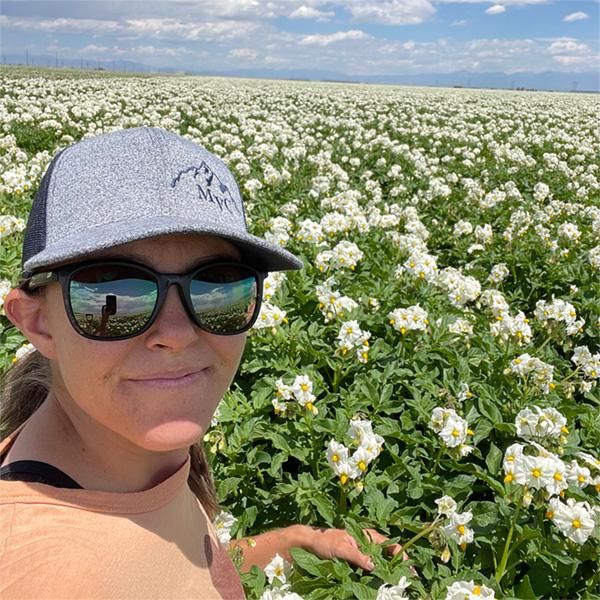
Keri Rogers
Agronomist
San Luis Valley, Colorado
Keri is an agronomist in the San Luis Valley of Colorado, where she works as a crop consultant, advising farmers on soil fertility, irrigation schedules, and pest management, with a focus on potato production and crop rotation.
What do you love about working in STEM?
I love working in STEM because I get to be outside and get my hands dirty—literally. I spend my days digging up soil and plants instead of sitting in an office. In the summer, my truck is my office, and I’m always on the go, out in the sun. It’s not for everyone, but for me, it’s the best part of the job.
How is data collection important in your work?
Data collection is a key part of my work. I create irrigation schedules by assessing soil moisture, plant health, weather conditions, and evapotranspiration (ET). I also conduct visual plant checks, sweep fields for pests with a bug net, and send petiole samples to labs to analyze nutrient levels. In the fall, I perform soil probing to guide fertility recommendations for the next season. All of this data helps farmers make informed decisions to keep their crops healthy.
How is STEM literacy important to your work and community?
STEM literacy is crucial for advancing our knowledge and improving agricultural practices. In my area, we collaborate with a plant pathologist from Colorado State University who researches plant diseases and pests based on our field samples. His findings help us make informed decisions and share better practices with local farmers. Since our community is small, even minor improvements can add up, leading to healthier crops and better pest and disease management for everyone.
Bringing Agricultural Science to Your Classroom
Help students explore real-world agricultural concepts like those in Keri’s work with this soil pH experiment from Agricultural Science with Vernier. This hands-on investigation teaches students how soil acidity affects nutrient availability—a critical factor agronomists consider when advising farmers. By testing pH levels in different soil samples, students learn to evaluate growing conditions and predict potential nutritional problems for plants.
Know an inspiring woman in STEM or a unique career path that uses data collection? Share with us on social! Questions? Reach out to support@vernier.com, call 888-837-6437, or drop us a line in our live chat.
Share this Article

Sign up for our newsletter
Stay in the loop! Beyond Measure delivers monthly updates on the latest news, ideas, and STEM resources from Vernier.


